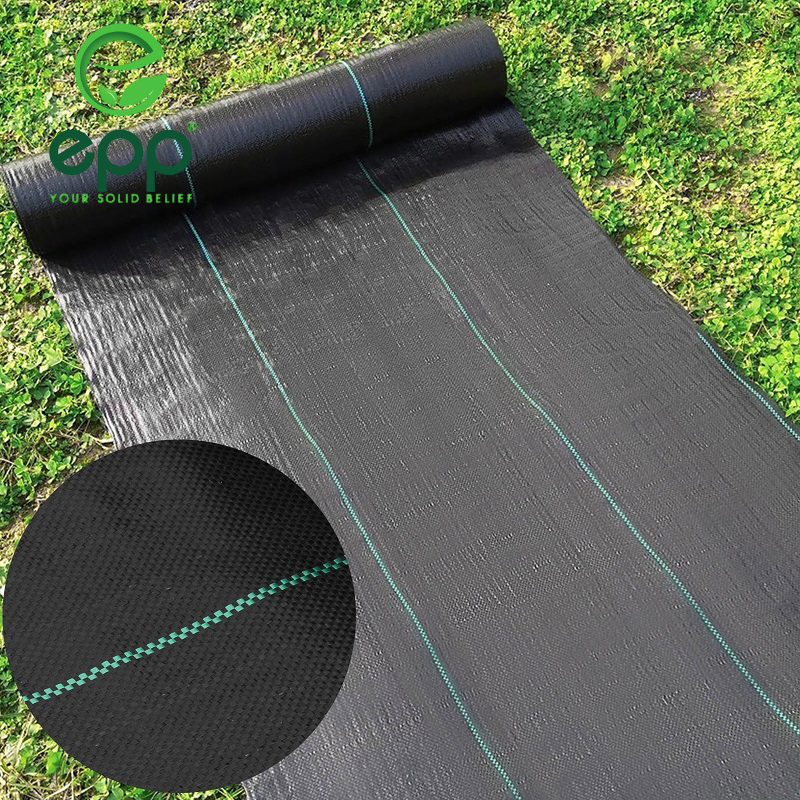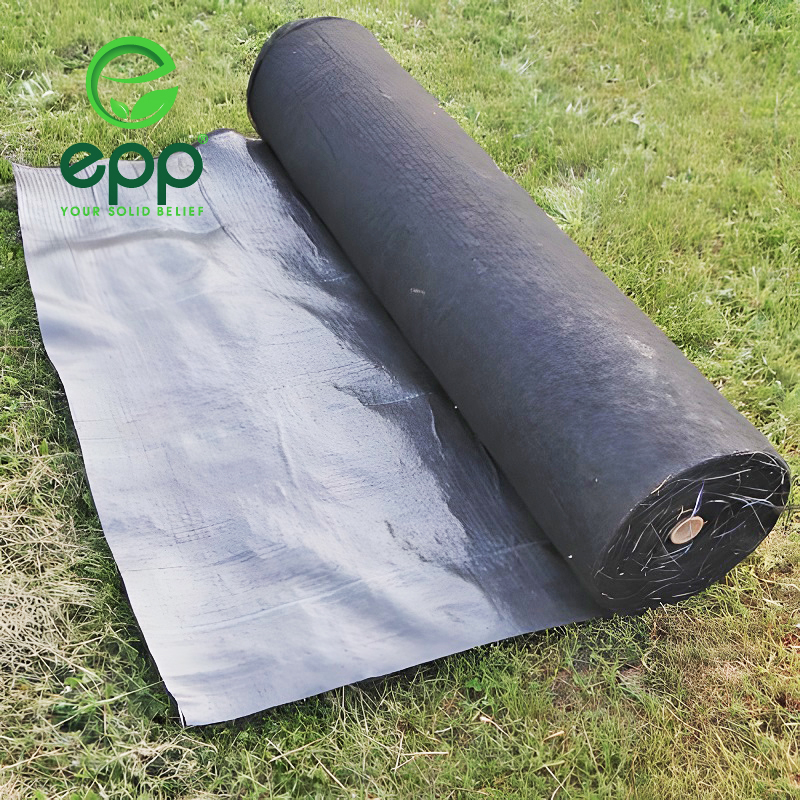Agricultural Weed Barrier Fabric plays an important role in maintaining cleanliness and preventing grass growth in areas that want to be preserved. Not only does it help preserve the beauty of green spaces, but it also brings many other benefits to lawn gardens, vegetable gardens, and other growing areas. Let's learn together important basic information about this material.
What is Agricultural Weed Barrier Fabric?
Agricultural Weed Barrier Fabric is a type of fabric made from virgin plastic, pure black, with a thickness of 0.05mm to 0.2mm. The fabric is used to cover the surface of agricultural land to prevent the growth of weeds and help crops grow and develop better.

What is Agricultural Weed Barrier Fabric?
Uses of anti-weed fabric
In the race against time and resources, anti-weed mulch is not only a useful tool but also a powerful partner for farmers. With its ability to suppress weeds, retain moisture, and protect soil, it makes an important contribution to the success of cropping systems and the direction of agriculture towards sustainability.
Prevent weeds, improve productivity
Weeds, with their unrivaled ability to compete with crops, are not only a challenge but also a major cause of productivity loss in agriculture. You may need better plant growth and higher yields as they compete with weeds in a war for resources. That's why Agricultural Weed Barrier Fabric has become an important tool in agricultural management strategies.
Keep the soil moist
Anti-weed mulch not only prevents weed growth but also keeps the soil moist. In this way, it creates ideal conditions for plant growth and development. This moisture retention not only helps plants cope with dry spells and high temperatures but also enhances their ability to absorb nutrients from the soil.
Protect soil from erosion
One of the important problems in land management is erosion, especially in extreme weather conditions. Agricultural Weed Barrier Fabric acts as a protective layer, keeping the soil from being washed away by heavy rains and strong winds. This not only maintains soil structure but also keeps nutrients in place.
Optimize productivity
Using anti-weed fabric is a smart investment for sustainable agriculture. Not only does it save effort and time, but it also enhances plant growth, leading to higher yields. Not only will you see your plants grow stronger, but you will also reduce your dependence on chemical fertilizers and pesticides.
How to use Agricultural Weed Barrier Fabric
To use Agricultural Weed Barrier Fabric effectively, follow these steps:

How to use Agricultural Weed Barrier Fabric
1. Prepare the soil surface
Before starting to use weed control mat, make sure the soil surface is clean and free of any obstructions such as rocks, bricks, or branches. This helps the mat to spread flat and not wrinkle when used.
2. Measure and cut the fabric
Make accurate measurements of the area to be covered and then cut the fabric to the corresponding size. This helps optimize material usage and ensures that the tarp will cover enough of the area to be protected.
3. Cover with the weed control fabric
Place the Agricultural Weed Barrier Fabric on the soil surface and flatten it so there are no wrinkles. Make sure that the entire area to be protected is covered evenly. Tarpaulin will act as a light blocker and prevent weed growth.
4. Pin the fabric to the ground
Use iron or plastic pins to firmly pin the fabric to the ground. Place staples at the edges and middle of the canvas to ensure stability and prevent the fabric from flying up in strong winds.
5. Check periodically
Perform periodic inspections to ensure that the fabric remains in good condition, with no holes or damage. If damage is detected, repair or replace the tarp immediately to maintain anti-weed performance.
6. Water management
Depending on the soil environment, create drainage holes in the Agricultural Weed Barrier Fabric to avoid standing water, especially in flood-prone areas. This helps maintain soil moisture without creating favorable conditions for weed growth.
7. Repair and maintenance
Monitor the condition of the tarpaulin and make repairs as soon as damage is detected. Periodic maintenance to ensure the fabric always maintains its weed-prevention function.
Using anti-weed mulch following the procedure above will help you optimize its performance, protect the soil, and keep your growing area in top condition.
In conclusion
To summarize, we have reviewed basic information about Agricultural Weed Barrier Fabric and its important effects in the agricultural sector. Anti-weed mulches are not only a useful tool in preventing weed growth but also provide many other important benefits. If you have any information that needs advice, please contact us at the address at the end of the article.
🌐Address: Central Lake 1 Building, Aqua Bay, Ecopark, Phung Cong Commune, Van Giang, Hung Yen
Website:https://epp.vn - https://eppvietnam.trustpass.alibaba.com
📲+84 986 002 888 - sales@epp.vn



